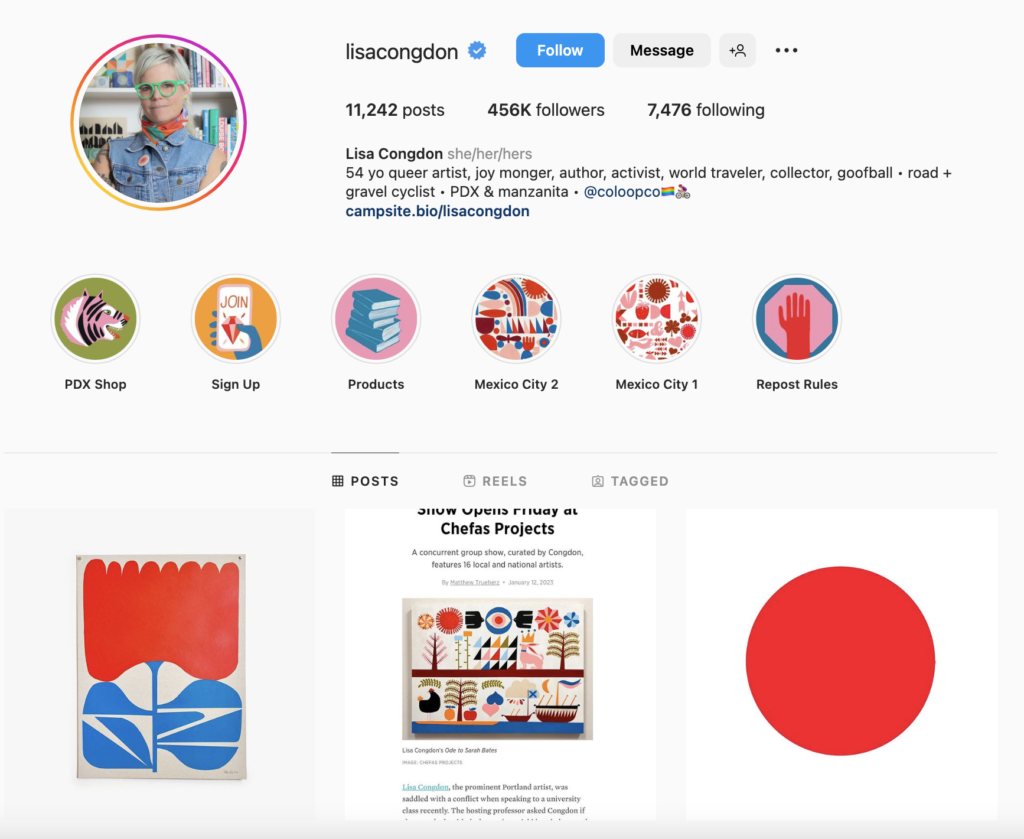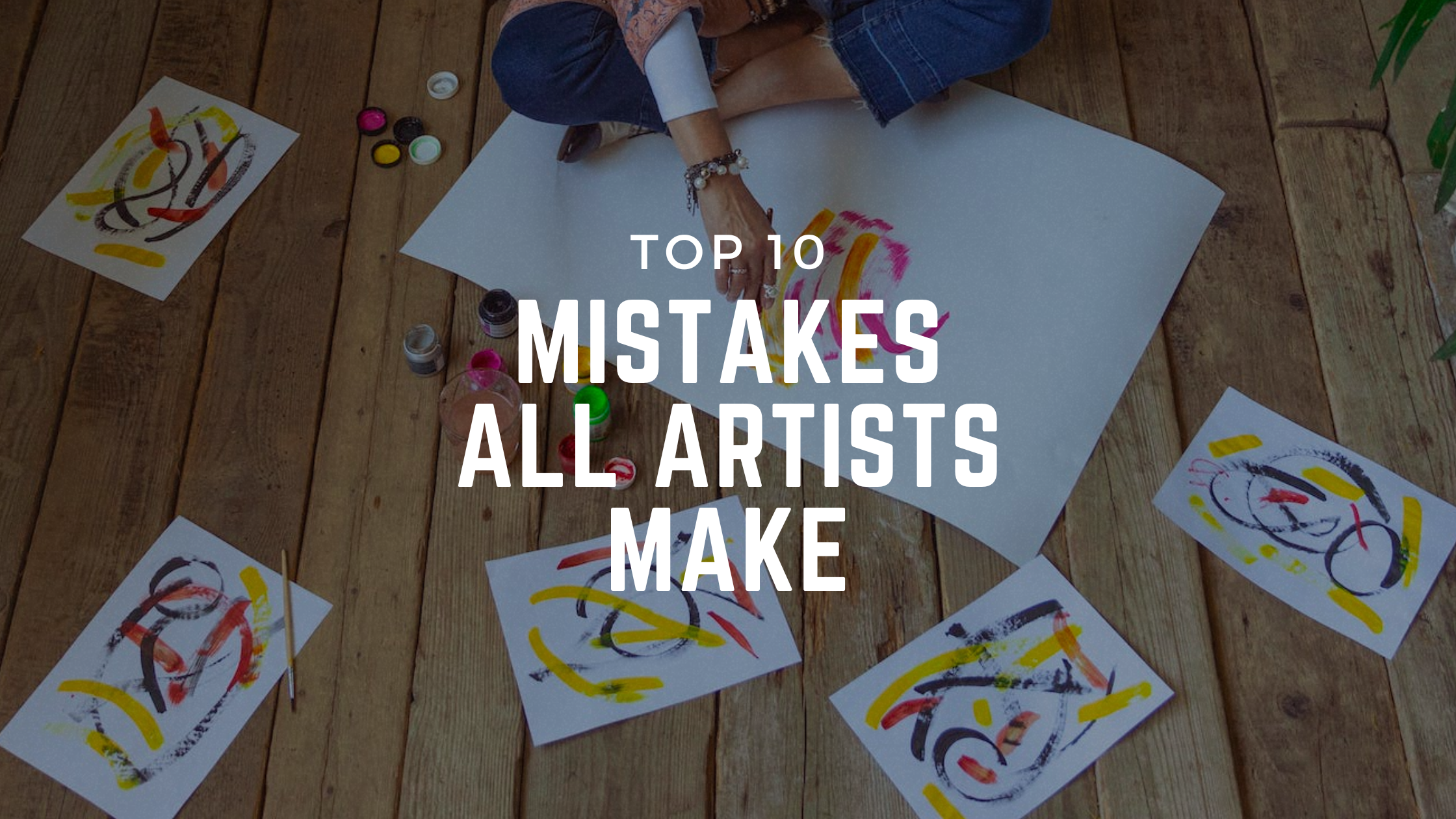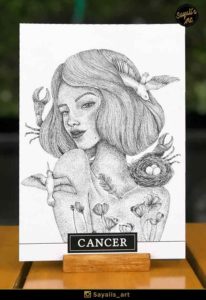Being an artist is a challenging and rewarding journey, but it’s not without its obstacles. From creating and promoting your work to managing your finances and building a successful career, there are many challenges that artists face on a daily basis. Unfortunately, there are some common mistakes that artists make that can hinder their success and growth in the industry. In this blog post, we’ll explore ten rookie mistakes that even experienced artists can fall victim to and provide tips on how to avoid them. By avoiding these pitfalls, you can set yourself up for success and continue to thrive as a professional artist!
1. Not Having a Clear Brand Identity
Your brand is how you present yourself and your work to the world. It should clearly communicate who you are, what you do, and why you do it. Without a clear brand identity, it can be difficult for potential clients or customers to understand what you do and why they should work with you. To avoid this mistake, take the time to develop a unique and cohesive brand that represents you and your work.
2. Not Pricing Your Work Properly
Many artists undervalue their work, which can lead to financial struggles and a lack of respect from potential clients. It’s important to research and understand the market value of your work, and to price it accordingly. Consider factors such as your experience, the time and materials required to create your work, and the demand for your art. Don’t be afraid to charge what you’re worth and be open to negotiation.
3. Not Networking Effectively
Building connections and relationships within the art community is crucial for success. However, many artists struggle with networking and miss out on valuable opportunities as a result. To avoid this mistake, make an effort to connect with other artists, galleries, and potential clients. Attend events, join online groups, and make yourself visible in the art world. Be genuine, helpful, and professional, and you’ll be able to build strong and lasting relationships.

4. Not Staying Organized
Managing a successful art career requires a lot of organization, from keeping track of deadlines and appointments to managing your finances and inventory. If you’re not organized, it can be easy to miss important opportunities or make costly mistakes. To avoid this mistake, develop a system for staying organized and stick to it. Use tools such as calendars, to-do lists, and spreadsheets to keep track of your tasks and responsibilities.
5. Not Seeking Feedback and Support
As an artist, it can be easy to become isolated and lose sight of your goals. Seeking feedback and support from other artists and industry professionals can help you stay on track and continue to grow and improve. To avoid this mistake, make an effort to seek feedback and support from others. Share your work with other artists and ask for their opinions and suggestions. Join artist communities and support groups where you can learn from others and receive guidance and encouragement.
6. Not Being Active on Social Media
Social media is a powerful tool for promoting your work and connecting with potential clients. If you’re not active on social media, you may be missing out on valuable opportunities and exposure. To avoid this mistake, establish a presence on the social media platforms that are most relevant to your art and audience. Post regularly, engage with your followers, and share your work and experiences. Be authentic, engaging, and professional, and you’ll be able to grow your audience and reach potential clients.

For example, illustrator Lisa Congdon has a popular Instagram page with over 400,000 followers, where she shares her colorful and whimsical art, as well as her thoughts and experiences as an artist. Another example is illustrator and animator Jazmin Truesdale. She uses her Instagram page to share her process and experiences as an artist. Her page features a mix of images of her finished artwork, as well as behind-the-scenes glimpses of her studio and workflow. Jazmin also shares her thoughts and experiences as an artist, offering inspiration and advice to her followers.
In addition to mass-market social media platforms like Twitter, Instagram, TikTok, artists would benefit from joining artists-focused communities such as Doodle Addicts, Art Station,or Behance. Be sure to check out our article where we highlight some of the top online art communities for artists to join.

7. Not Having a Website
In today’s digital age, having a website is essential for any artist. A website allows you to showcase your work, share your story, and provide potential clients with a way to contact you. Without a website, you may be losing out on potential business. To avoid this mistake, invest in a professional website that represents you and your work. Include high-quality images of your art, a bio and artist statement, and contact information. Make sure your website is easy to navigate and showcases your best work.
There are many companies that provide visual website builders specifically designed for artists. These tools make it easy for artists to create professional-looking websites to showcase their work and connect with potential clients. Some popular options include Format, Squarespace, Wix, and Weebly. These companies offer user-friendly drag-and-drop interfaces that make it easy to add and rearrange images of your art, as well as information about yourself and your work. They also offer a variety of customizable templates and design tools, so you can create a website that is unique and reflective of your brand. Additionally, many of these companies offer additional features such as e-commerce capabilities and SEO tools to help you grow and succeed online as an artist.

8. Not Diversifying Your Income Streams
Depending on a single source of income can be risky, and many artists struggle to make a living from their art alone. Diversifying your income streams can provide financial stability and allow you to focus on your art without worrying about making ends meet.
There are many ways that artists can diversify their income streams. Some possible options include:
- Sell your artwork: One way to generate income as an artist is to sell your artwork directly to collectors, galleries, or online platforms. You can sell original pieces, as well as prints and reproductions of your work.
- Teach art classes: Teaching art classes can be a great way to generate income and share your skills and knowledge with others. You can teach classes in person, online, or through workshops and retreats.
- Sell art-related products: In addition to selling your artwork, you can also generate income by selling art-related products such as books, DVDs, or art supplies. You can sell these products directly to your audience, or through online platforms such as Etsy or Society6.

- License your artwork: Licensing your artwork allows you to generate income by allowing others to use your art for commercial purposes. You can license your artwork for use on products such as greeting cards, clothing, or home decor.
- Offer art services: Another way to generate income as an artist is to offer art-related services, such as commissioned artwork, murals, or art installations. This allows you to use your artistic skills and creativity to provide value to others.
9. Not Continuously Learning and Growing
The art world is constantly evolving, and it’s important to stay up-to-date with the latest trends and techniques. By continuously learning and growing, you can keep your work fresh and relevant, and remain competitive in the industry. To avoid this mistake, make an effort to learn and grow as an artist. Take classes, attend workshops, and experiment with new mediums and styles. Stay curious and open to new ideas, and you’ll be able to continue to develop and improve as an artist.
We put together a great resource outlining some of our favorite online educational platforms with art classes for artists of any skill level.
10. Not Having a Business Plan
As an artist, it’s important to approach your career as a business. Without a business plan, it can be difficult to set goals, manage your finances, and grow your career. To avoid this mistake, take the time to develop a business plan that outlines your goals, target audience, marketing strategy, and financial projections. A well-crafted business plan can provide direction and focus, and help you stay on track and succeed as an artist.
Final Thoughts
Being a professional artist is not without its pitfalls and depending on your work for income can come with a cost, so it’s important to avoid common mistakes that can hinder your success and growth in the industry. These 10 rookie mistakes are just a few to look out for, but by being aware and diligent in your practice you can set yourself up for long-term success. . By avoiding these pitfalls, you can set yourself up for success and continue to thrive in the art world. Stay focused, stay organized, and stay true to yourself, and you’ll be able to build a successful and fulfilling career as an artist!





